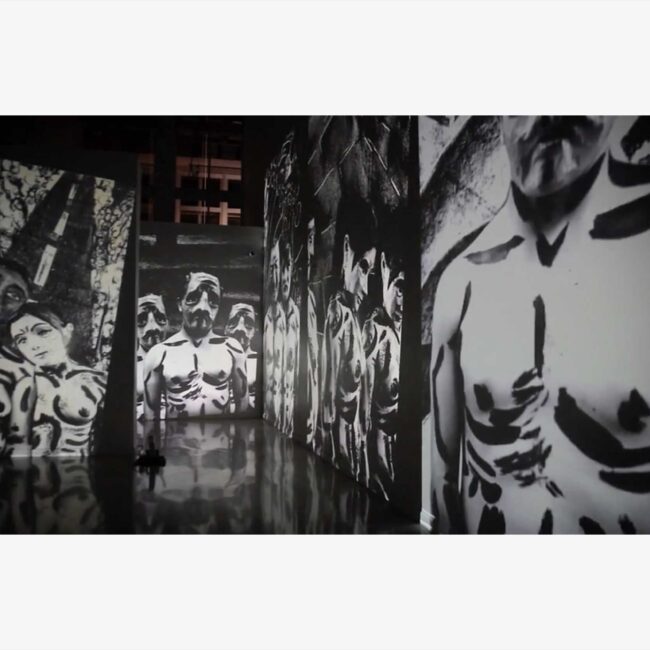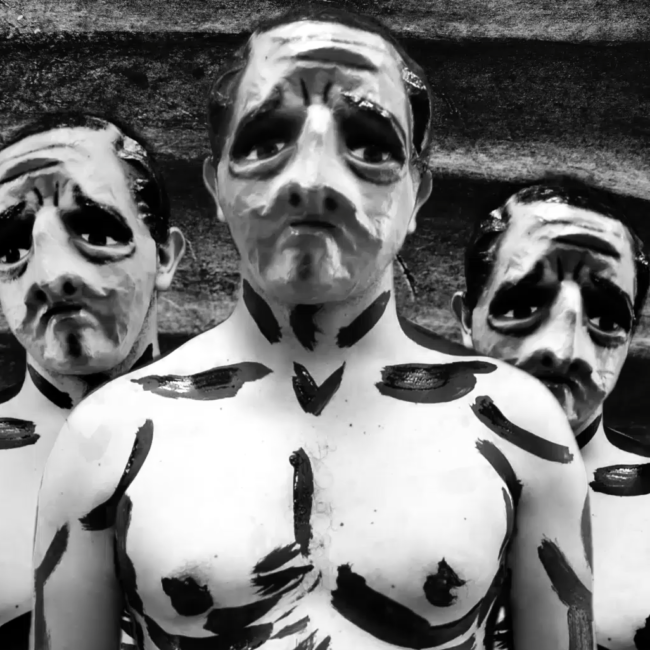Born in Ecuador, Edison Peñafiel migrated to the United States leaving the political and economic instability of his native country. His singular style integrates video and multimedia installation to create surreal echoes of our world, environments that translate experience. His work centers the migrant as a subject, informed by his own life. By introducing looping video projections, Peñafiel imitates the loops that make up our history and present. His visions show people trapped in behaviors of movement and labor, always being watched. He draws the eye to odd angles that our world often intersects at—using sculpture, photography, animation, video, and space to create disturbing reflections of the realities we participate in and witness every day. These unnerving views break us out of the desensitized lull that an ongoing crisis creates.
Peñafiel has presented his work in numerous large scale projects, site-specific, and immersive installations, appearing at the Bass Museum Walgreens’ Windows, the Museum of Contemporary Art North Miami, the Atchugarry Art Center, the Orlando Museum of Art, the Elsewhere Museum, the Atlantic Center for the Arts, the USF Contemporary Art Museum, and the Museum of Art Fort Lauderdale. Notable awards include: the John S. and James L. Knight Foundation, the Florida Prize in Contemporary Art, the South Florida Cultural Consortium Fellowship, and the Foundation for Contemporary Arts . He is represented by Sabrina Amrani Gallery in Madrid, Spain.
Edison Peñafiel was selected for his work, “¡CORRELÉ, CORRELÉ, CORRELÁ, POR AQUÍ, POR AQUÍ, POR ALLÁ, CORRELÉ, CORRELÉ, CORRELÁ, CORRELÉ QUE TE VAN A MATAR!,” exploring the undocumented immigrant identity and experience. His work examines experiences about those on the underside of the world’s major conflicts: the migrant, the laborer, the surveilled, informed by personal and collective experiences.
“This work displays journeys in graphic, black-and-white triptychs—the simultaneous telling of the beginning, middle, and end in side-by-side multiscreen video,” Peñafiel explains. “The travelers appear naked yet masked. They are trapped in the stultifying form of cover; the vulnerable form of display. These masks tap into into concepts of being undocumented, hiding or assuming an identity, and working with fake documents. The insistence of the title creates a tension with the speed of the movement about the different contemporary routes of escape: Mexico to the US, the Middle East and Africa to Europe, and so on.”
Through visual references to German expressionism and the surveillance state, Peñafiel keeps the work inside a long term discussion about the turning gears of modernity and the alienation it continues to produce. This visual approach brims with an anxiety illustrated in crooked lines, all informed by the dismal cruelties of bureaucracy, the policing of human movement, and empty rituals of labor. “The hidden peril of these destructive cycles lends urgency to exploring the history of how we got here, how we perceive what’s going on, and the hard truths of those who must face the darkest parts of the present.”
That urgency and import is always matched by emotional impact. For Peñafiel, the outcome of his work must bring a visceral change in the viewer, equal parts intriguing and unsettling. “These confrontations with injustice through surreal imagery are conjured to produce what we need in the world today: empathy for the oppressed.”






